Learn how to make and use calendula oil for skin soothing, healing, and brightening. Calendula is a powerful herb with amazing benefits, particularly when it comes to calming skin ailments and rashes. This calendula oil recipe is a simple infusion that can be used on its own or as the first step in a variety of natural skin care recipes.
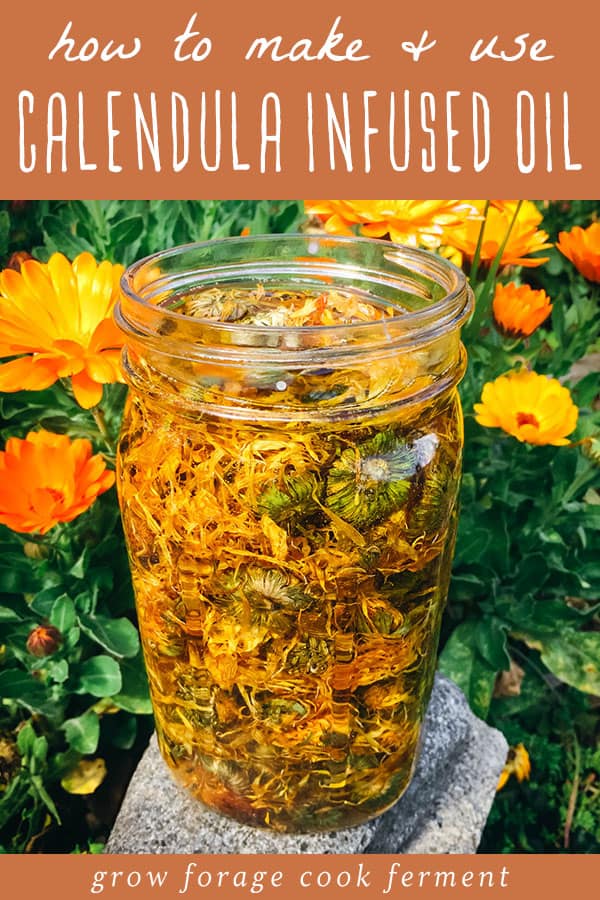
Calendula Benefits
Calendula is one of my very favorite flowers. Not only is it a beautiful addition to the garden, but it has many amazing health benefits. I feel lucky that it grows readily and wild in our backyard without me having to do much, as it reseeds itself every year.
You can read more about how to grow it and its uses in my post here: 10 Reasons to Grow Calendula for Your Garden, Food, and Health.
One of the most popular and effective ways to enjoy the benefits of calendula is to make an infused oil. There are many ways to use calendula-infused oil once you have it on hand!
Before we get to its uses, let’s talk about why calendula is so awesome in the first place. First and foremost, let’s set aside that calendula is edible, and focus on how great calendula is for the skin.
It is beneficial for dry skin, cracks, eczema, scrapes, minor burns and sunburns, rashes, chapped lips, and pesky bug bites. It helps to reduce inflammation and promotes wound healing.
This is what makes calendula-infused oil such a beneficial application, as it can be used topically for many different ailments. Plus it’s gorgeous!
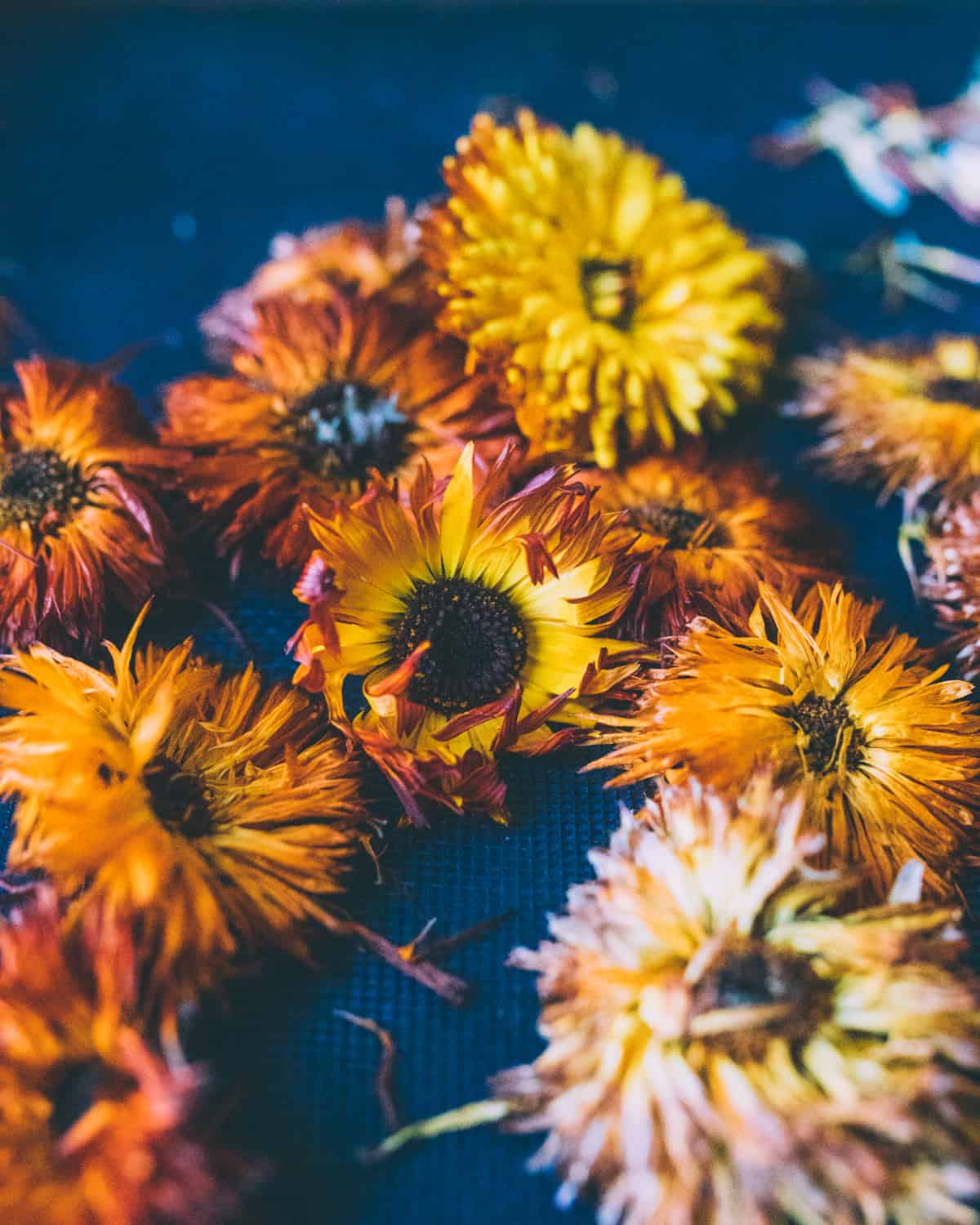
How to Make a Calendula Oil Infusion
In this simple recipe, infuse dried calendula flowers into the carrier oil of your choice. For most skin applications I like to use a blend of coconut, sweet almond, and olive oils. Other options include jojoba, avocado, and sunflower.
The kind of oil that you use will depend on the final application and your own personal preference.
If you have fresh calendula flowers, they can be used but they need to be dried first. A homemade drying screen is a great way to do that!
The amount of dried herb you use is flexible and not an exact science, just put dried calendula flowers in whatever jar that you want to use and cover them with oil. Easy peasy!
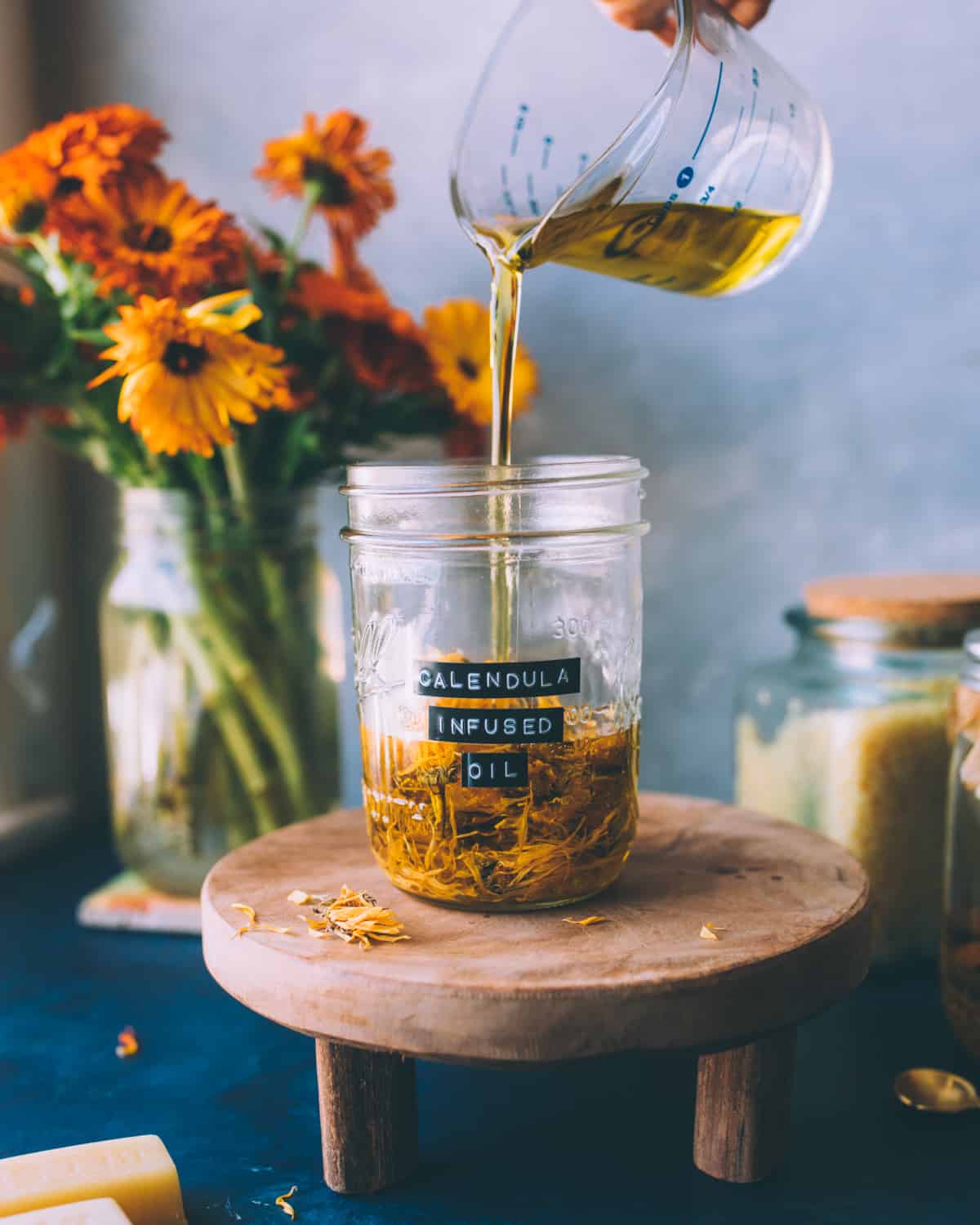
Cover the jar with a lid, and let the infusion sit in a cool place away from direct sunlight for several weeks before using. This will help to preserve the quality of more light-sensitive oils, like sweet almond oil.
A quicker option is to add a bit of heat using an Excalibur dehydrator, as it is excellent for heating at lower temperatures. To see all of the different methods that can be used for infusing oils, see my post on How to Make Infused Herbal Oils.
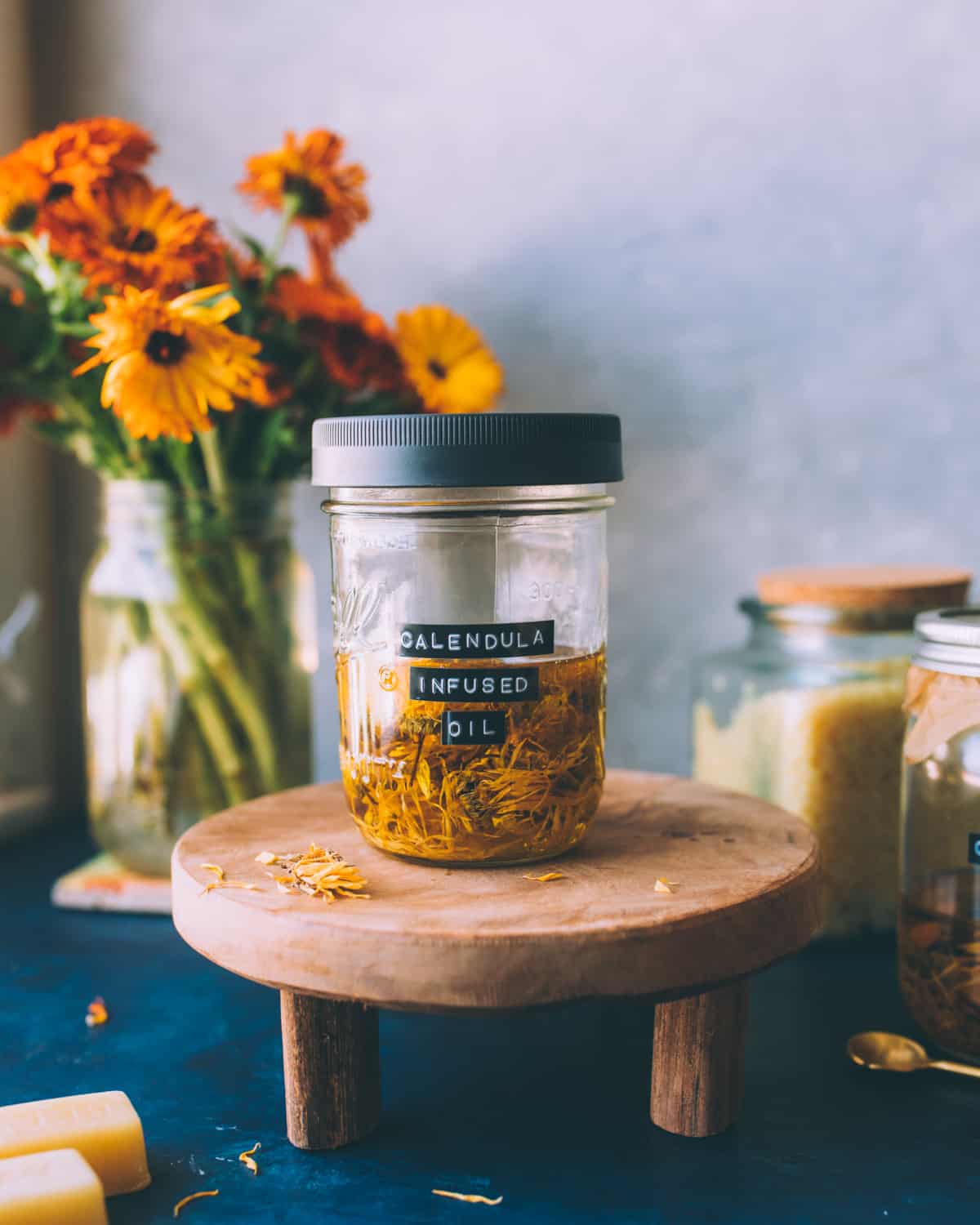
Once the calendula oil is infused, it can be used as-is to hydrate and heal dry or irritated skin. To use as a body oil, the flowers can be left in, or strained out.
To use calendula oil in other skincare recipes, strain out the calendula flowers with a fine mesh strainer or cheesecloth before adding it to a recipe.
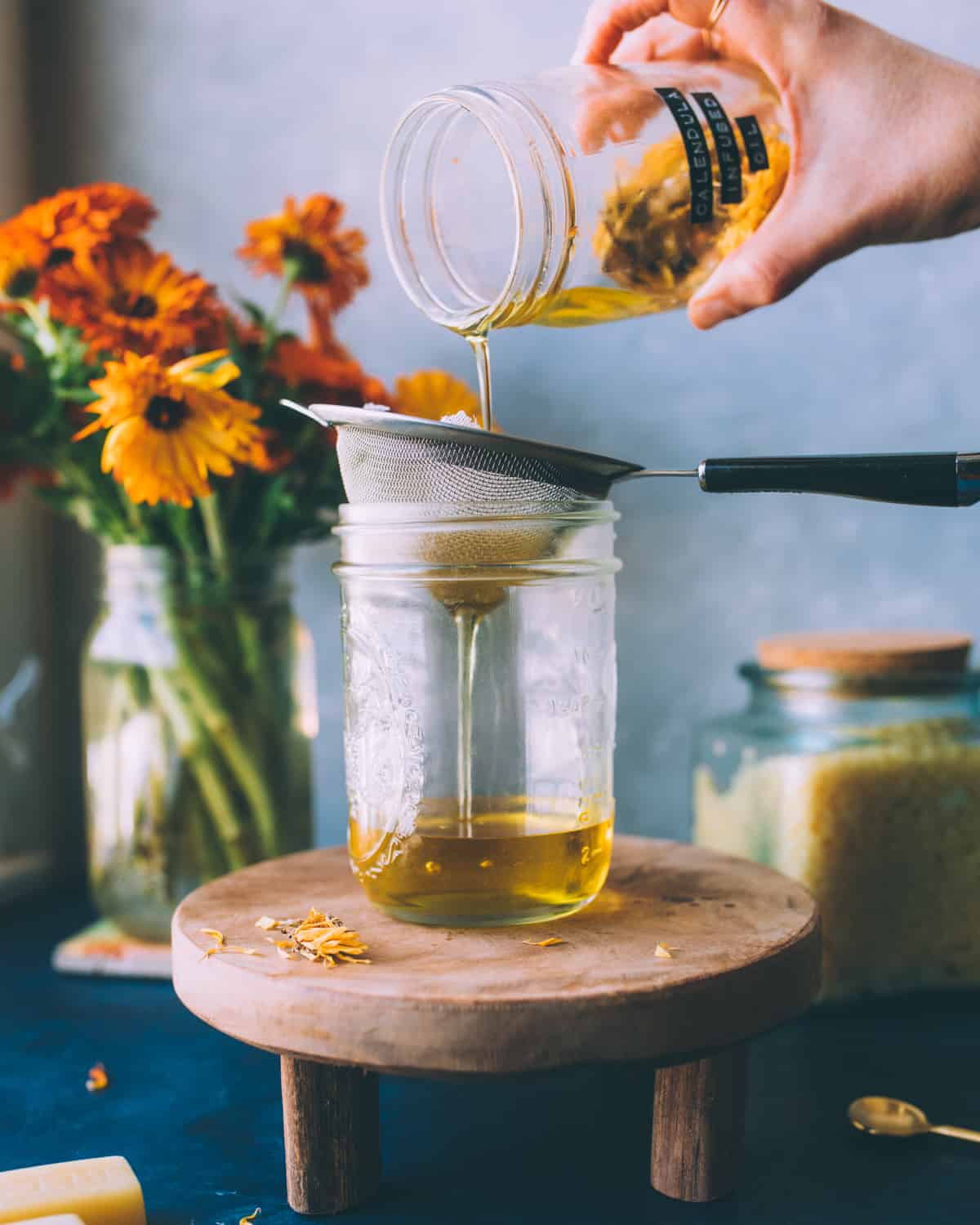
How to Use Calendula Infused Oil
Now that the calendula oil is fully infused, here are some of my favorite ways to use it!
Use The Oil As Is
Once you have that wonderful golden oil, you can use it just as it is, if you wish.
Rub it on dry hands and feet, on cuts and bruises, or even rub a little into your hair. It is extremely nourishing on its own!
That said, it may be a little cumbersome to carry a jar of oil around, so I generally prefer these other applications.

Healing Calendula Salve
Making a homemade healing salve is probably my favorite way to use calendula oil.
Calendula salve is one of the easiest to make and most versatile ways to utilize the benefits of this amazing flower!
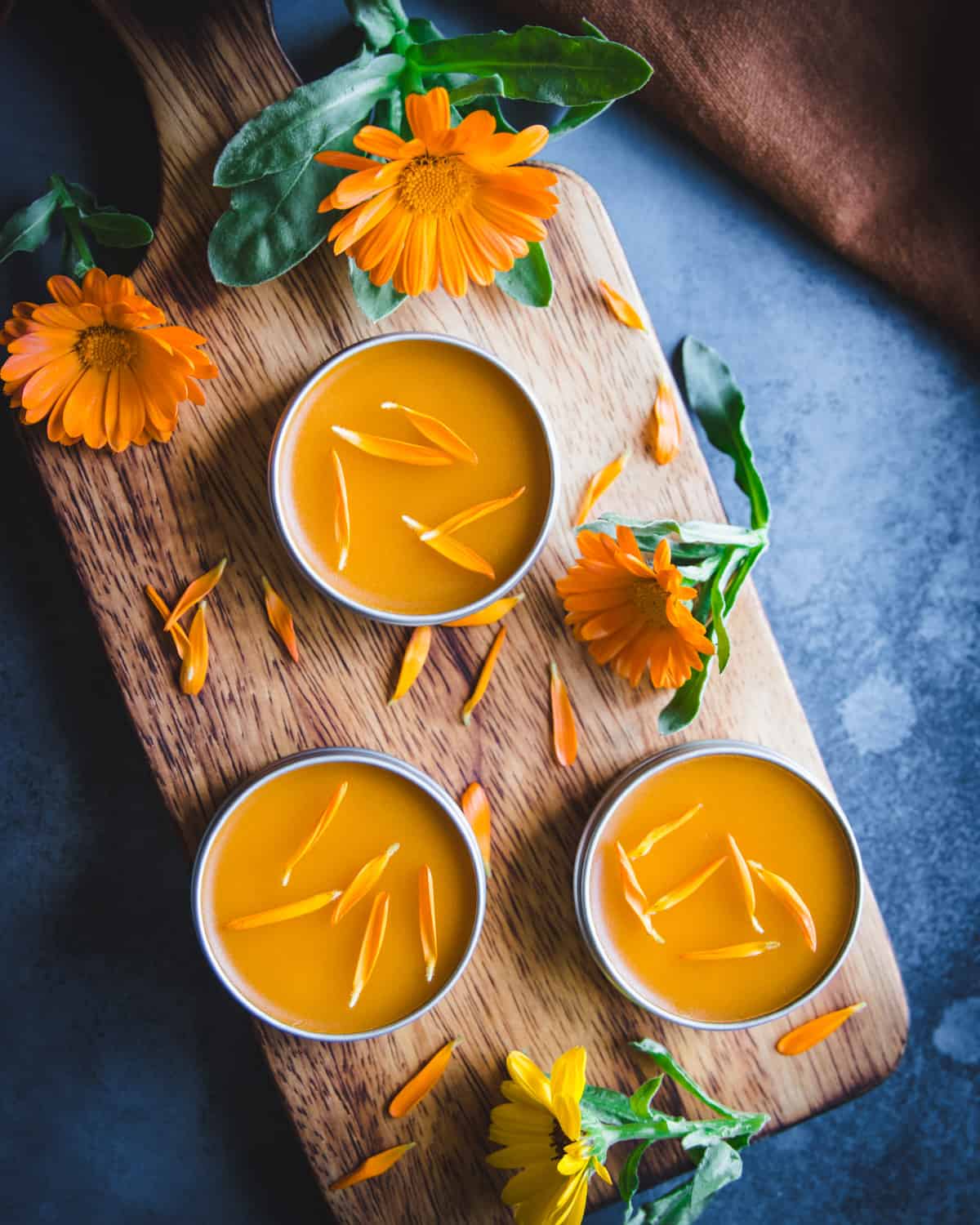
Calendula Cream
This homemade calendula cream is a rich and creamy delight for the skin.
It is perfect and soothing for really dry and itchy skin. I use it almost daily as a moisturizer!
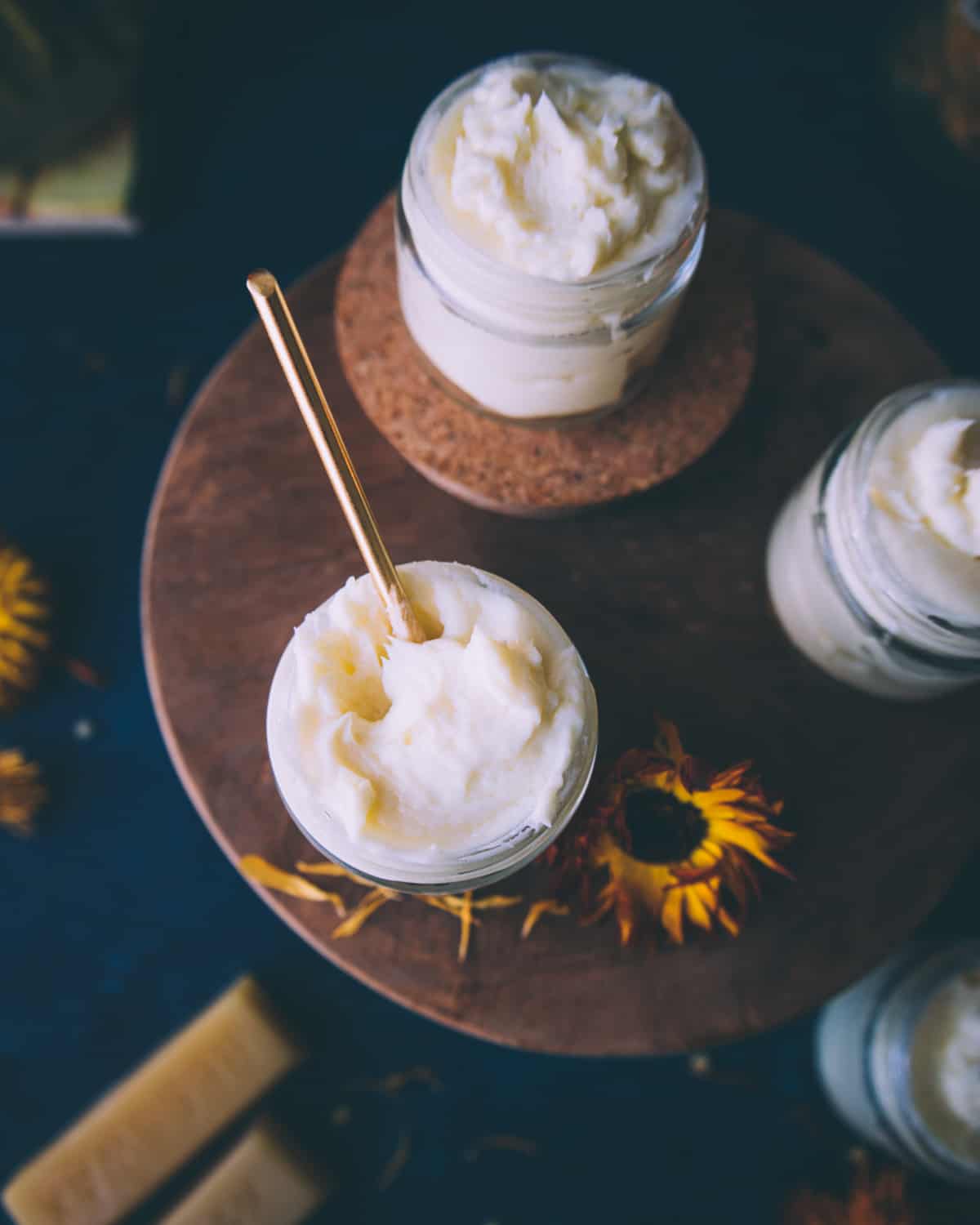
Lotion Bars with Calendula Oil
I’ve become really fond of homemade hard lotion bars lately. They are perfect for keeping on hand when you’re out and about and need some skin nourishment.
My calendula lotion bars are easy to make and great to have around!
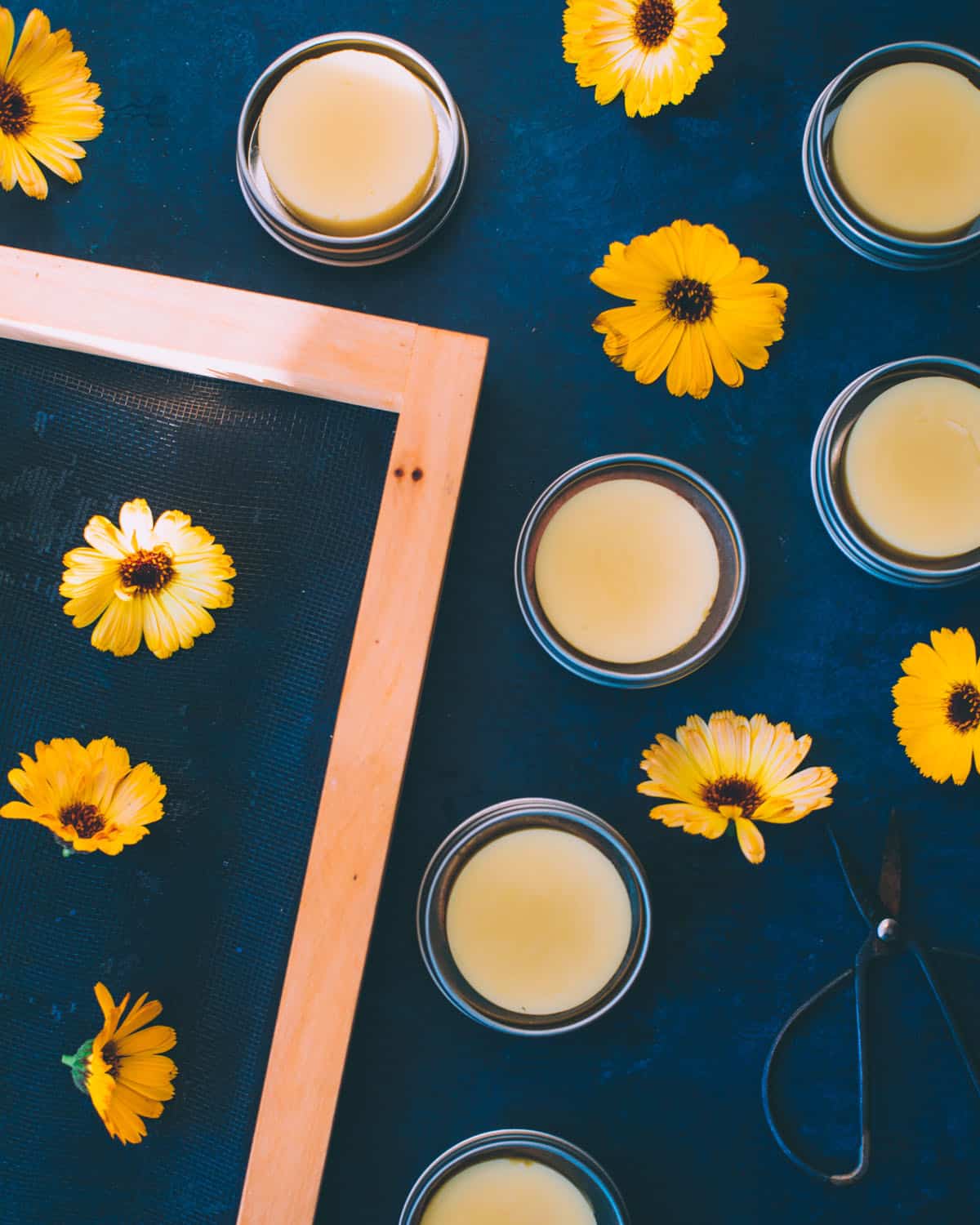
Calendula Whipped Body Butter
This whipped body butter has a luscious consistency, and is super soothing as it’s powered by calendula oil!
Perfect for all-over body use, this body butter will moisturize and heal dry or irritated skin.
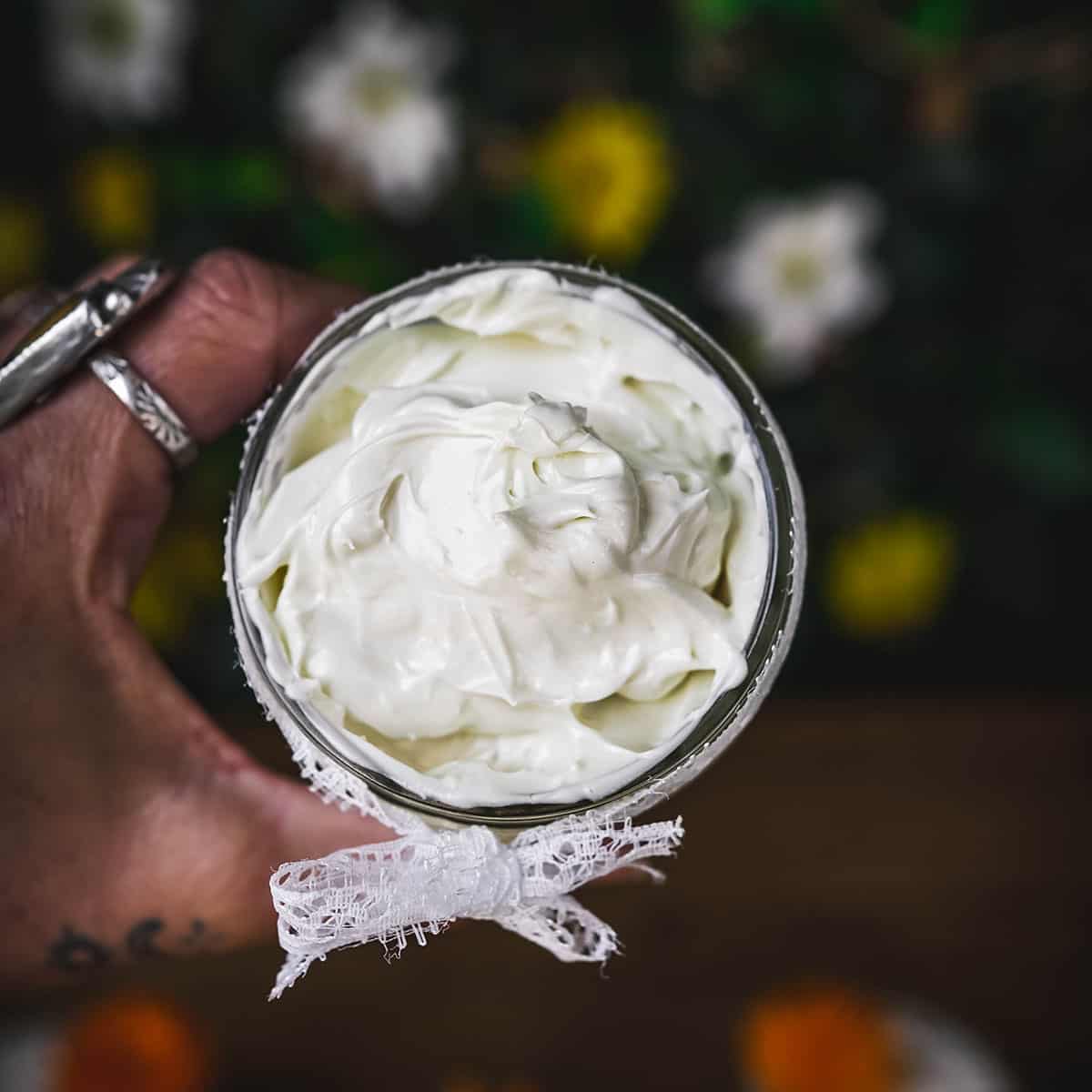
Homemade Calendula Soap
I’ve been really getting into making my own homemade soap these days.
The first batch of soap I ever made was a wonderful calendula soap recipe, and it’s still one of my favorites!
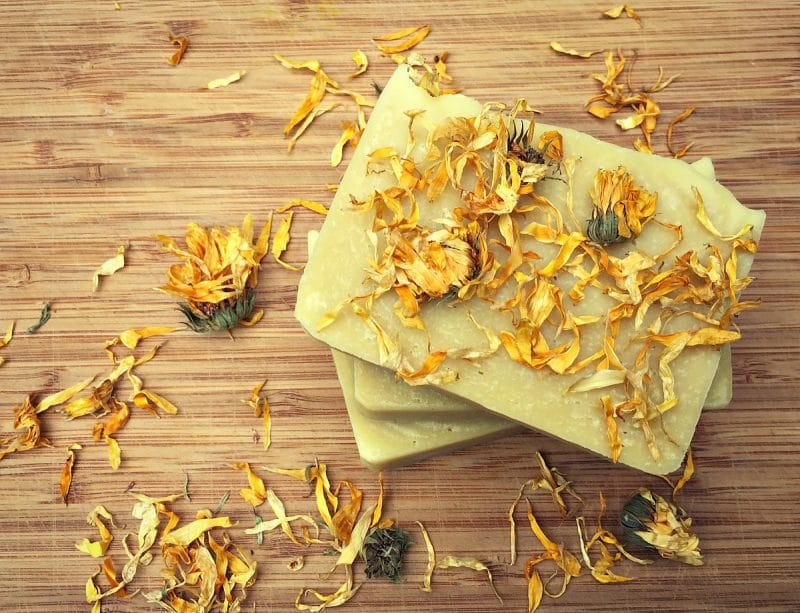
Diaper Rash Salve
Calendula is one of the safest herbal ingredients to use on a baby’s sensitive skin. This herbal diaper rash salve uses calendula-infused oil as its base, and it works wonders!
It’s a much better alternative than the store-bought stuff with weird ingredients. It’s perfect for your little one!
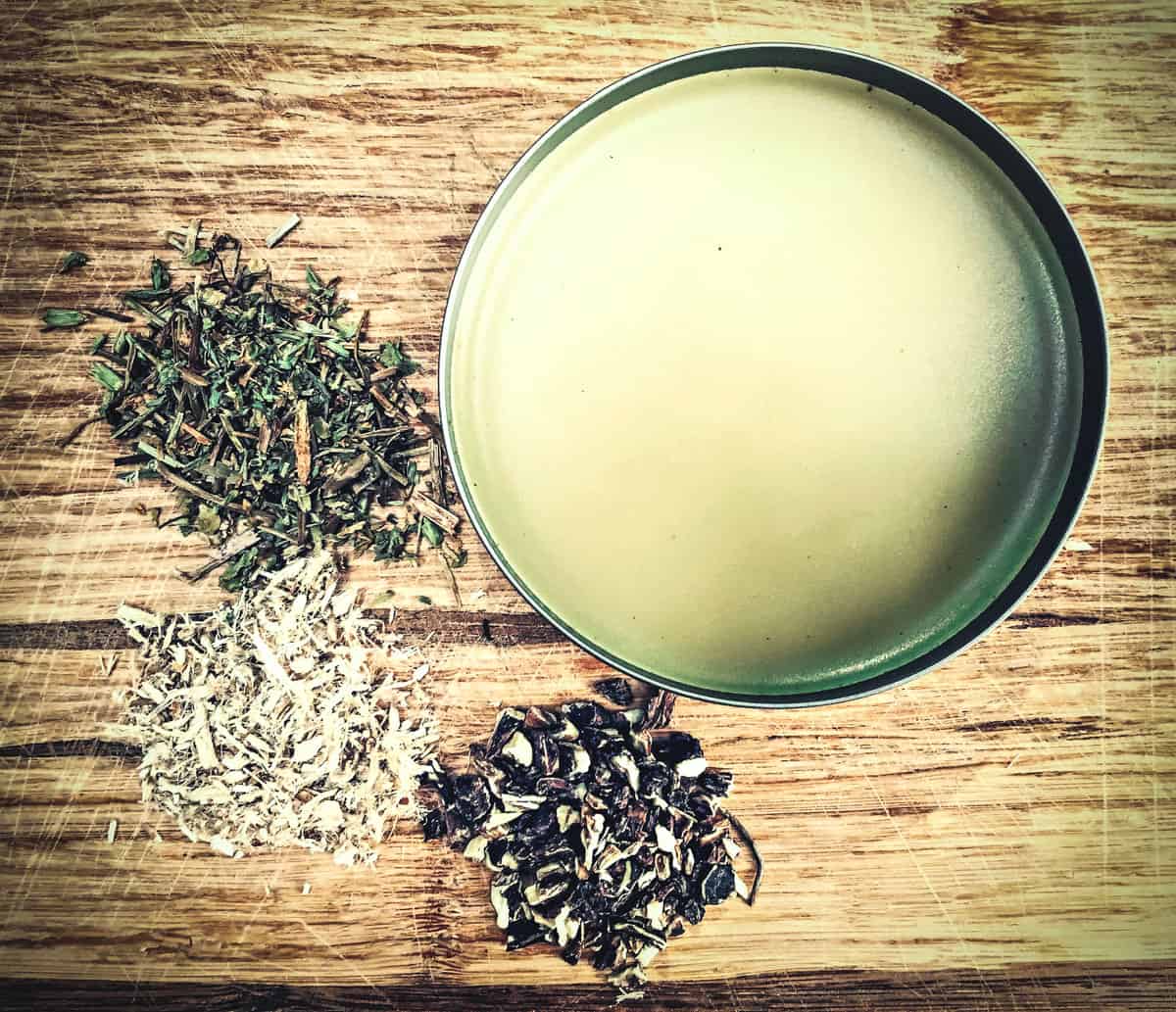
Salad Dressing Using Calendula Oil
Last, but certainly not least, don’t forget that infused calendula oil is edible! Use it in place of regular oil when making a vinaigrette-style salad dressing.
I would use whatever oil you normally use in your dressings as the oil for your infusion, probably extra virgin olive oil. You could even throw a few fresh calendula petals on the salad if you have some handy.
This will make a wonderful and bright addition to your everyday salads!
Need more healing calendula flower power?
- Herbal Bath Salt with Calendula & Mint
- Homemade Calendula Lip Balm
- Whipped Body Butter with Calendula
- How to Make Calendula Cream: Homemade Skin Care Recipe
- Calendula Lotion Bars for Dry Skin
- Calendula Iced Tea
- Calendula & Thyme Shortbread Cookies
- 10 Reasons to Grow Calendula
Calendula Infused Oil
Equipment
- Dehydrator optional
Ingredients
- 1 cup dried calendula flowers
- 1½ cup carrier oil of your choice (see notes)
Instructions
- Place dried calendula flowers into the jar.
- Pour carrier oil over to cover the flowers and cap the jar with a lid.
- Let the oil infuse in a cool place out of direct sunlight for at least two weeks, or until the infusion is a golden color and ready to use.
Dehydrator method
- Follow the first two instructions, and then place the jar into a box-style dehydrator (such as Excalibur brand). Set it to 100° F (38° C) and let it heat infuse for 24-48 hours.
Notes
- The amounts of dried calendula flowers and carrier oils are estimates and don’t need to be exact. You can make as much or as little of this infused oil as you like, so feel free to modify the amount. As long as the oil is covering whatever amount of dried flowers you decide to use, that is what matters!
- For most skin applications I like to use a blend of coconut, sweet almond, and olive oils. Other options include jojoba, avocado, and sunflower. The kind of oil that you use will depend on the final application and your own personal preference.

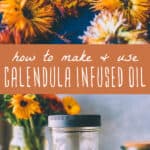
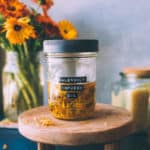

Thank you Colleen, I have used this recipe for making many batches of the oil. Love it ! I make your lotion bars and lotion with the oil. Finished product is always the best. Thanks again for sharing your knowledge and recipes.
Many hugs from Idaho !!
You’re so welcome. Enjoy!!
Would you happen to know if this can be made into a healing salve for a cat? I have a grown feline who likes to start trouble, needless to say he has an abscess on his neck that is already healing , just thought it might help the process. Thanks
I’m really not sure, but you could try it and see if it helps any.
What about using the calendula oil as a salad oil (using a base EVOO)? I’m surprised i don’t hear any direct ingestion uses of the infused oil! Anyone have any feedback on this use?
Sure, you could do that!
I actually take calendula oil just orally by dropper but using on a salad could be a great way to use it and gain the benefits.
Do you just use the petals and leave the center of the flower out of the oil? The pic looks like it’s a complete flower. Thanks for all your helpful info, Colleen!
Hi Tessie. You can use the complete flower.
Thank you for sharing and your very informative things you are always sending
Can I mix marigold flowers with calendula flowers for infused oil
Hi there. That should be fine!
Would almond and coconut oil work?
Definitely!
Hello,
Since a few years i make my own soap.I love calendula for soap making ,and a friend of mine has Parkinsons and can only use my calendula soap.
So yes i am a great lover of this plant that grows in my own garden!
We live in the south of Spain
Thanks for sharing, Sella! Calendula is such a wonderful plant ally!
Can the seeds of calendula be used if all of my flowers have gone to seed? Or are the petals the only part that can be used for infusing oils?
Hi there. Using the flowers is the easiest way to make calendula oil. You can make a calendula seed oil, however you will need specialized equipment like a motorized or hand-crank expeller press.
I use an ear oil containing calendula, mullein, garlic & St. Johns wort…especially this time of year with allergies & ear infections, etc.
Thank you for sharing and your very informative things you are always sending.
How do you dry your flowers? i have them in my herb garden, do i just hang them heads in a brown bag or dry slow and low in an oven? Many thanks in advance Maize
I usually dry them by hanging them upside down or by spreading them out on homemade drying screens.
i pluck the yellow petals off the flower head, leaving the plant in the soil so the seeds can ripen to fall off or harvest for the next season’s crop. I dry the petals in a paper bag hanging in the shade.
Thank you for this. I’ve only used it for a couple of ways and I see it’s more useful than I realized.
Great article! Thanks for the info!
Menopause has wreaked havoc on my skin. When I wake up with a giant cootie on my face I use a dab of Calendula infused Castor Oil. Cootie gone in 24 hours. I Love all things Calendula.
what can we do with the leftover flowers after draining the oil. I always hate to discard them…. maybe add to soap or lotion bars for texture ? what do you think?
Yes, you could definitely try that! I’m always of the mind that most of the goodness from the flowers is in the oil after infusing, so I have no problem putting them in the compost at that point :)
I wonder if I have calendula growing in our yard? Great post, Colleen…very inspiring!
I’ve never seen it there… but I bet it’s somewhere nearby!
Calendula is Marigold flowers. So if Marigolds grow where you live, you are in luck because they grow like wild! We are in Colorado and they are very successful here.